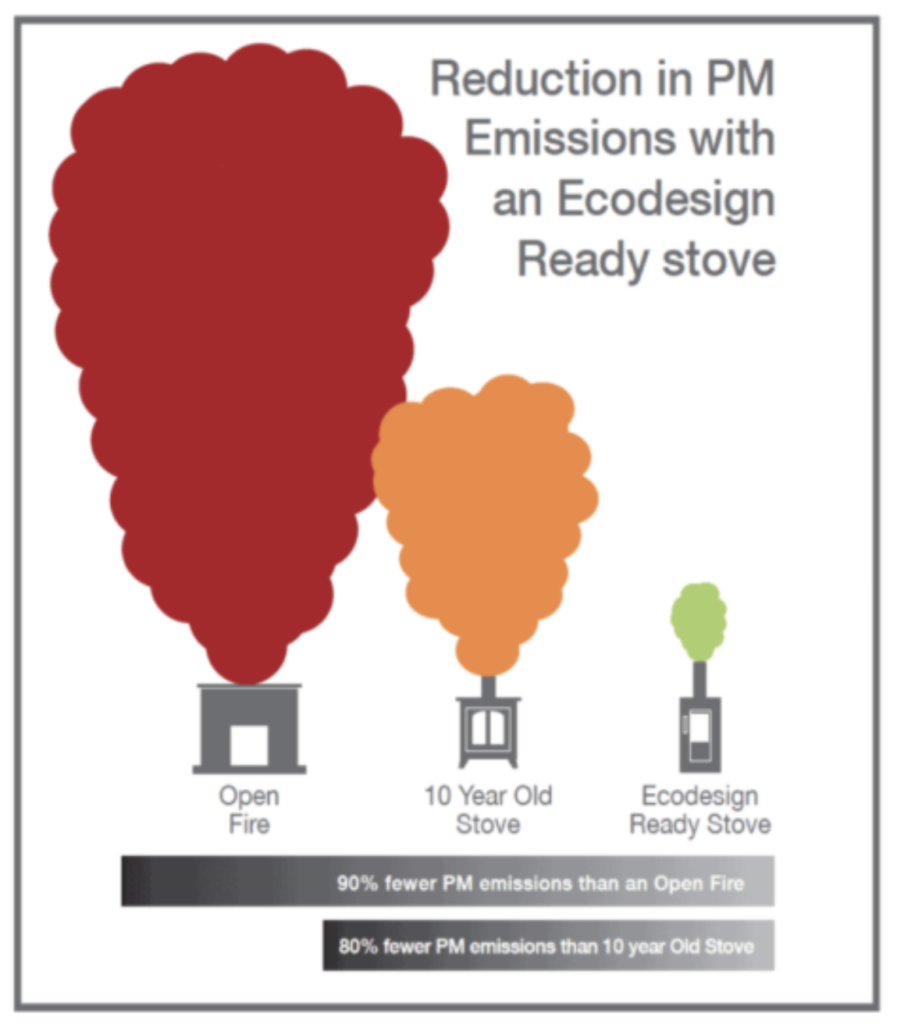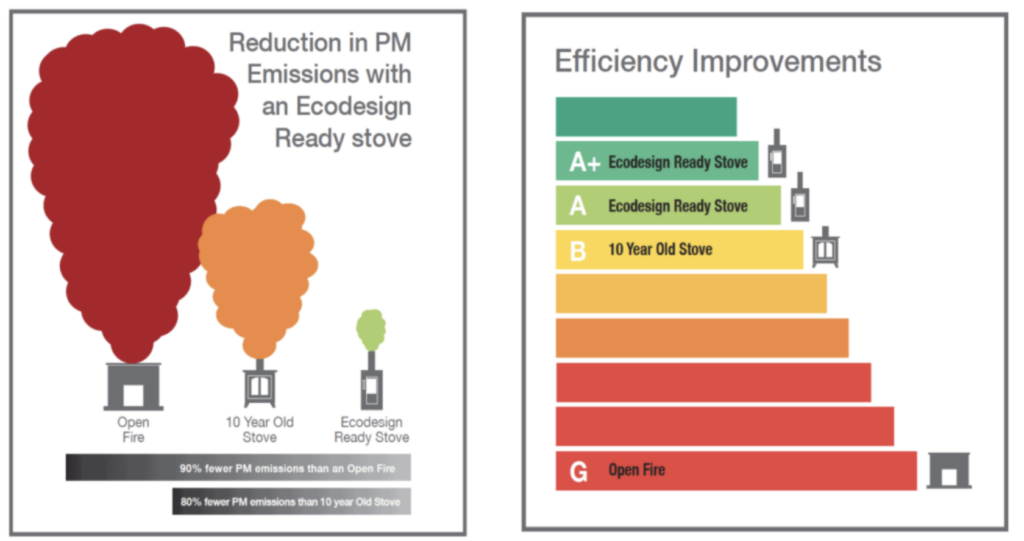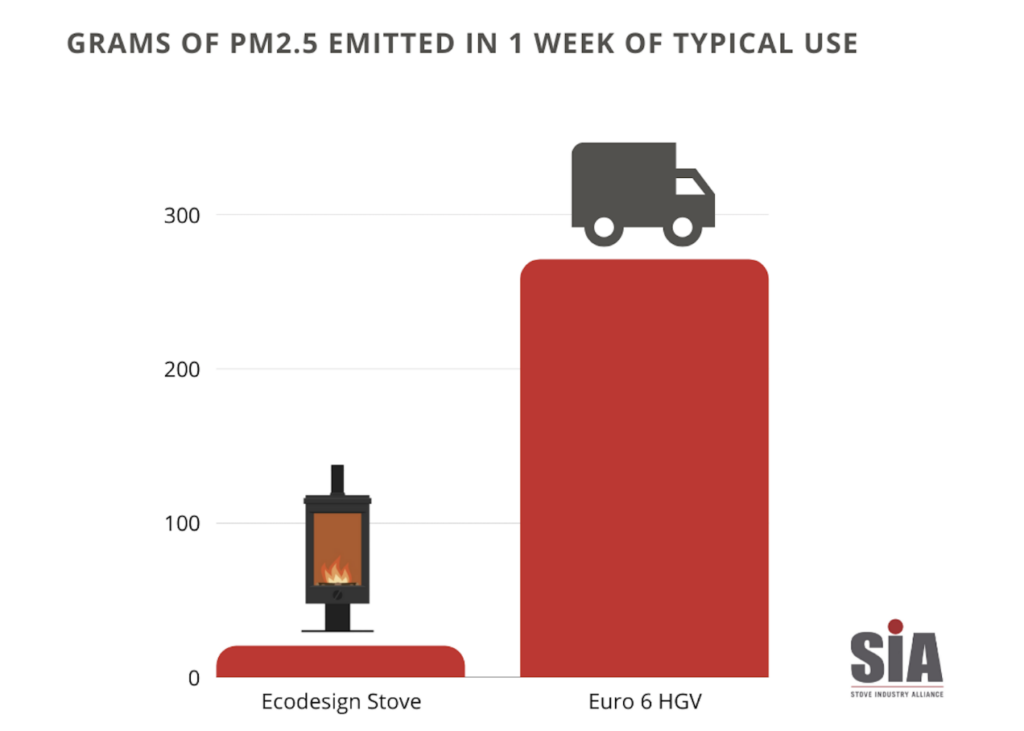The latest air pollution data produced by Defra shows that there has been an 18% overall decrease in PM2.5 emissions across the UK between the ten-year period 2012 and 2022. PM emissions, which have come from domestic burning, also fell between the one-year period 2021 and 2022, with a 3.9% reduction in PM10 and a 4% decrease in PM2.5. The data also reports that PM2.5 emissions from domestic use of wood fuel specifically dropped by 2.7%.

This date period outlined by Defra coincides with a record level of sales of wood-burning stoves among member companies of the SIA (Stove Industry Alliance). There were a number of reasons driving this growth, which included the rising costs of gas and electricity, along with a growing apprehension among the public around the reliability of the grid to meet their energy demands.
What does this mean?
This is proof that there is a growing awareness of the distinct environmental benefits of burning wood in an Ecodesign stove – as opposed to using an open fire or outdated non-Ecodesign stove. Sales of stoves have increased by some 40% in the period 2021 to 2022.

‘Domestic burning‘
The term “domestic burning” used by Defra does include a wide range of burning activities, including the use of gas for cooking and hot water, oil for space heating and solid fuels such as charcoal for outdoor burning.
The sting in the tail…
As much as we want to celebrate the fact that people are increasingly realising the benefits of using an Ecodesign stove, there is a sting in the tail our industry has had to deal with. An unfair sting, too. This sting manifests in the form of misinformation.
We have reported misinformation about burning wood a number of times. Such misinformation includes the “HGV” comparison. This particularly misleading comparison was comparing emissions from a wood-burning stove with that of an HGV. Such claims stated that an Ecodesign stove produces the same amount of particulate emissions (PM) as 750 modern HGVs. The source of the original HGV figure was actually from a report by the European Environmental Bureau. This report looked at the amount of PM2.5 emissions given off by generating a GJ (gigajoule) of heat in a stove, compared to the amount generated by creating a GJ of power in an HGV. The major flaw with this comparison is that these claims are based on very crude calculations using permitted rates of emissions. They did not consider either real-world or non-exhaust emissions. Also, these permitted emission rates greatly rely on differing measurement protocols and techniques.

Another piece of misinformation that needs addressing is the myth that harvesting firewood destroys woodlands and biodiversity. In fact, wood sourced for firewood is almost always from the thinning of healthy trees, which in turn helps promote the growth of woodlands. So the thinning of mature trees for firewood and the removal of dying trees actually helps the increased absorption of CO2 – but some still think burning wood is not carbon neutral. This sadly falls under misinformation. The fact is, if used correctly, stoves and the burning of wood can be carbon neutral. Burning correctly seasoned wood on an Ecodesign stove can produce less carbon dioxide than if the wood was left to rot on the floor of a forest. It’s been reported that worldwide, dead and decaying wood releases around 10.9 gigatons of carbon every year. This is around 115% of annual fossil fuel emissions.
If trees are planted at the same rate as they die, you have a sustainable and renewable energy source. Trees capture carbon dioxide from the air. As water moves up the trunk and into the branches of the trees, along with the presence of sunlight, a process known as photosynthesis occurs. The carbon dioxide and water essentially mix, resulting in the release of oxygen back into the atmosphere.
A final thought…
There are more myths and misinformation – and no doubt these will continue to circulate in some parts of the media from time to time. The fact is, however, that a wood-burning stove is both a sustainable and green way to heat a home – as long as you’re using the right stove and burning wood in the correct way.








